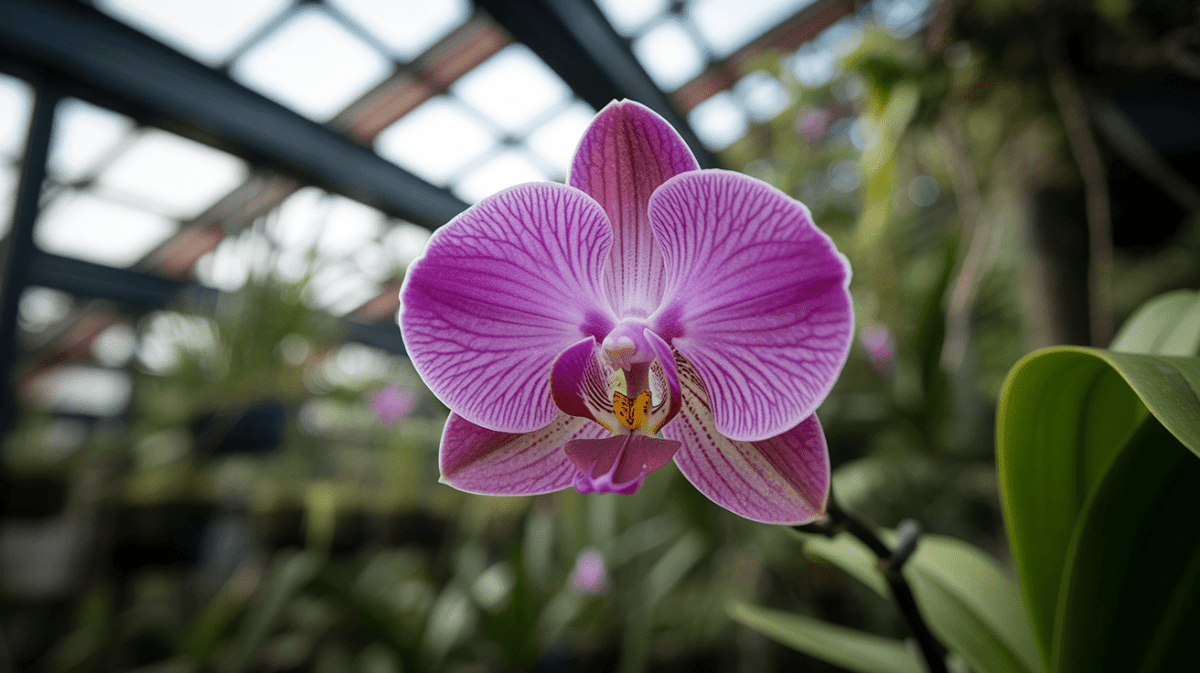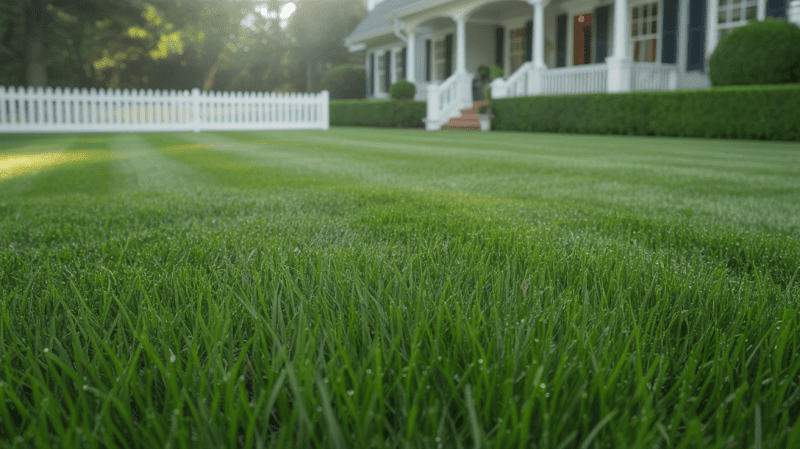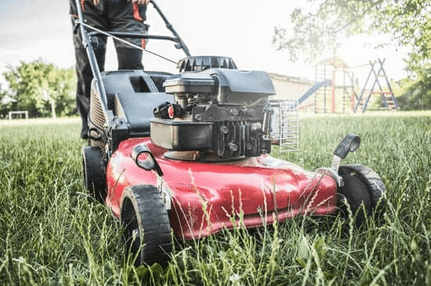Simple tips for nurturing beautiful orchids in your home:

I've always been drawn to the vast world of orchids. With about 880 genera and 26,000 species, they are quite diverse. Most live in the tropics, growing on other plants or rocks. Knowing the basics of orchid care is key to their health and blooms.
For beginners, understanding what to expect is vital. This guide will equip you with the knowledge to care for your orchids. It will help them flourish.
Key Takeaways
- Understand the diversity of orchids and their basic needs.
- Learn the essentials of orchid care for survival and blooming.
- Discover the necessary knowledge to care for your orchids.
- Get started with your orchid growing journey.
- Improve your orchid care skills with our guide.
Understanding Orchids: Types and Basic Needs
Exploring orchids, I see how vital it is to know their types and needs for beginners. Orchids are incredibly diverse, with over 30,000 species found worldwide.
Popular Orchid Varieties for Beginners
For new orchid growers, some varieties are easier to care for and more beautiful. Phalaenopsis, or moth orchids, are favorites. They bloom for a long time and do well indoors.
Phalaenopsis (Moth Orchids)
Phalaenopsis orchids have elegant stems and blooms that last months. They need bright, indirect light and moderate water, perfect for homes.
Dendrobium Orchids
Dendrobium orchids are loved for their long stems and flowers. They need more light than Phalaenopsis and can handle various temperatures, making them versatile.
Cattleya Orchids
Cattleya orchids are known for their large, vibrant flowers. They need bright light and careful watering to avoid root rot.
The Natural Habitat of Orchids
Orchids live in many places, from rainforests to mountains. Knowing their natural habitats helps us create the right conditions for them to grow.
| Orchid Type | Natural Habitat | Lighting Needs |
|---|---|---|
| Phalaenopsis | Tropical forests | Bright, indirect light |
| Dendrobium | Tropical and subtropical regions | High light |
| Cattleya | Tropical forests | Bright light |
What Makes Orchids Different from Other Houseplants
Orchids are special because of their epiphytic nature and unique roots. They need specific care, like potting mixes that mimic their natural habitats.
How to Grow Orchids Successfully: Essential Care Requirements

To make your orchids thrive, mimic their natural home. This means managing light, temperature, and humidity carefully. Knowing these key elements is essential for a perfect orchid environment.
Light Requirements for Healthy Orchids
Orchids need bright, indirect light. A spot on an east- or west-facing windowsill is perfect. Direct sunlight can burn their leaves.
Direct vs. Indirect Light
Some orchids can handle direct sunlight, but most prefer indirect light. A sheer curtain can soften the light and protect the leaves.
Seasonal Light Adjustments
Light changes with the seasons. Move your orchids or use grow lights to keep the light right all year.
Temperature and Humidity Needs
Orchids like different temperatures. Most do best in daytime temperatures of 70-85°F and cooler nights of 60-70°F.
Day vs. Night Temperature Differences
A cooler night can encourage orchids to bloom. Aim for a 10-15°F drop in temperature from day to night.
Creating Humidity Zones
Orchids thrive in humid air, with a relative humidity of 40-70%. Place the pot on a water tray with pebbles to create a humid spot.
Air Circulation Considerations
Good air flow prevents diseases and helps growth. Make sure your orchids have room and consider a fan if needed.
Selecting the Right Location in Your Home
When picking a spot for your orchids, think about light, temperature, and humidity. A spot near an east- or west-facing window is usually best.
| Care Factor | Ideal Condition |
|---|---|
| Light | Bright, Indirect |
| Temperature (Day) | 70-85°F |
| Temperature (Night) | 60-70°F |
| Humidity | 40-70% |
Watering and Feeding Your Orchids

To keep your orchids thriving, it's key to understand their watering and fertilization needs. Orchids need specific amounts of moisture and nutrients. Meeting these needs is vital for their health and blooming.
Proper Watering Techniques for Different Orchid Types
Watering orchids isn't the same for all. Different types need different amounts of moisture. For instance, Phalaenopsis orchids like to dry a bit between waterings. On the other hand, Cattleya orchids need more consistent moisture.
The Ice Cube Method: Myth or Reality
The ice cube method involves placing an ice cube on the potting medium once a week. It can help with watering, but it's not for all orchids. Some say it can cause root rot because of the cold.
Soaking vs. Misting
Soaking means submerging the pot in water for a few minutes. Misting is when you spray the roots and leaves with water. Soaking is good for orchids that need a lot of moisture. Misting is better for those that prefer drier conditions.
Signs of Overwatering and Underwatering
Overwatering can cause root rot, while underwatering can lead to dehydration. Signs of overwatering include yellowing leaves and soft, mushy roots. Underwatering may cause dry, wrinkled roots and wilted leaves.
| Signs | Overwatering | Underwatering |
|---|---|---|
| Leaves | Yellowing or soft | Wilted or dry |
| Roots | Soft, mushy, or rotting | Dry, wrinkled |
Fertilization Schedule and Best Products
Fertilizing orchids is crucial for their growth and blooming. Use a balanced fertilizer, but during the blooming season, a bloom-boosting fertilizer can be better.
Balanced vs. Bloom-Boosting Fertilizers
A balanced fertilizer has equal parts nitrogen, phosphorus, and potassium. Bloom-boosting fertilizers have more phosphorus to help with flowering.
When to Reduce Fertilizing
During the dormant season, reduce fertilizing. This lets the orchid rest.
Water Quality Considerations
The quality of water used for orchids is very important. Water with high chlorine or fluoride can harm them. Use filtered or rainwater for your orchids.
Potting, Repotting, and Troubleshooting

As an orchid lover, I've found that the right potting mix and repotting are key. Orchids need a mix that drains well to avoid root rot. You can choose from bark, moss, or a mix, based on the orchid type and your preference.
Choosing the Right Potting Medium
Choosing the right potting medium is vital for your orchids' health. You have three main options: bark, moss, or a mix of both.
Bark vs. Moss vs. Mixed Media
- Bark drains well but breaks down fast.
- Moss holds moisture but can rot if not aired well.
- Mixed media balances drainage and moisture.
When and How to Repot Your Orchid
Repotting is needed when the mix breaks down or the orchid grows too big. It's usually done every 2-3 years.
To repot, carefully take out the orchid, trim old roots, and put it in a new pot with fresh mix.
Common Orchid Pests and Diseases
Regular checks can spot pests and diseases early. Common pests are scale and mealybugs, and root rot is a common disease.
Identifying Scale and Mealybugs
Scale looks like small, brown bumps on leaves. Mealybugs are white, cottony patches.
Treating Root Rot
To fix root rot, cut off bad roots and repot in a fresh, draining mix.
Fixing Yellow Leaves and Other Common Problems
Yellow leaves may indicate that you're watering too much or too little. Adjust your watering and ensure good air flow to solve the problem.
Conclusion: Enjoying Your Orchid Journey
Growing orchids can be very rewarding. With the right care, these plants can bloom for months and live for years. As you keep growing orchids, you'll find joy in caring for them and seeing them grow.
This guide has given you the tools to enjoy growing orchids. You'll learn about different types of orchids and how to care for them. You'll get better at watering and fertilizing, making your orchids thrive.
As you get more experience, you'll learn new things about orchids. You'll share your knowledge with others. Whether you're new or experienced, the world of orchids is exciting. I'm excited for you to explore it.
FAQ
What are the best orchid varieties for beginners?
I suggest starting with Phalaenopsis, Dendrobium, or Cattleya orchids. They are easy to care for and can thrive in different conditions.
How often should I water my orchids?
The watering frequency varies based on the orchid type, potting medium, and climate. Generally, I water my orchids once a week. Always check the potting medium's moisture before watering.
What is the ideal temperature for growing orchids?
Most orchids prefer daytime temperatures of 65-75°F (18-24°C) and nighttime temperatures 5-10°F (3-6°C) lower. Some species need warmer or cooler temperatures. It's important to research your orchid's specific needs.
How much light do orchids need?
Orchids need bright, indirect light. An east- or west-facing window is ideal. Phalaenopsis can handle low light, while Cattleya needs more intense light.
What is the best fertilizer for orchids?
I recommend a balanced, water-soluble fertilizer (20-20-20) once a month. You can also use a fertilizer made for orchids, which may have iron and magnesium.
How do I repot my orchid?
Repot when the potting medium breaks down or the plant outgrows its container. Choose a slightly larger pot. Gently remove the plant, taking care not to damage the roots. Trim old or dead roots before repotting.
What are common pests and diseases that affect orchids?
Common pests include mealybugs, spider mites, and scale. Fungal diseases like root rot and leaf spot can also occur. Regularly inspect your orchids and treat any infestations or infections promptly.
Why are my orchid's leaves turning yellow?
Yellow leaves can be due to overwatering, underwatering, or extreme temperatures. Check the potting medium, adjust your watering, and ensure proper light and temperature.
How can I increase the humidity around my orchids?
To increase humidity, place the pot on a tray with water and pebbles, use a humidifier, or group plants together.
Can I propagate my orchid?
Yes, many orchids can be propagated through division, keiki (pups), or back bulbs. Research the specific method for your orchid variety for success.
DISCLAIMER
This document is provided for general information purposes only and should not be relied upon as providing legal advice, technical, or specific operational guidance to the reader, whether as to the practices described in the document or the applicable legal requirements and regulations. Lawnfly.com expressly disclaims any responsibility for liability arising from or related to the use or misuse of any information in this document.



